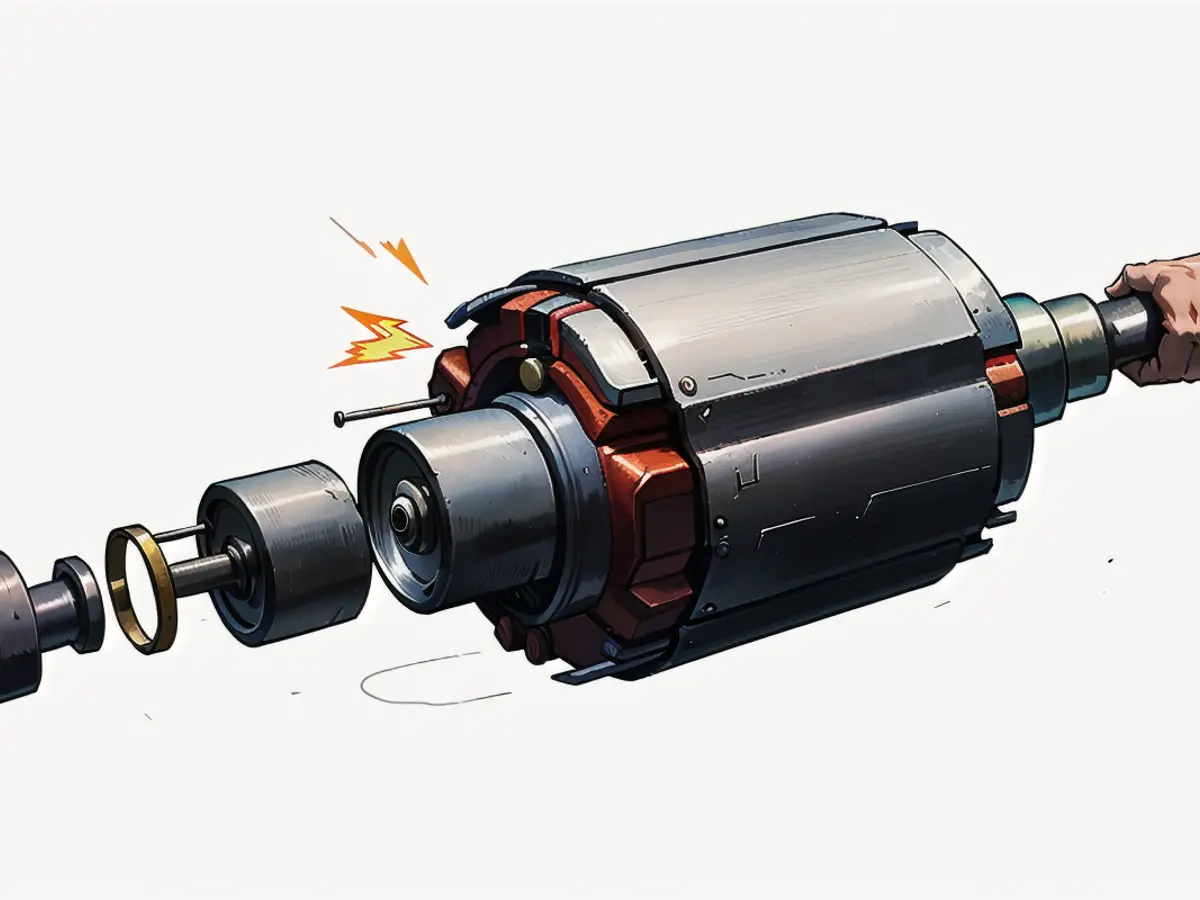What's the mechanism behind an electric motor's function?
In an electric motor, components like crankshafts, valves, and Kolbens are non-existent. Instead, the focus is on magnetic fields and attraction.
Compared to a modern diesel or gasoline engine, an electric motor's setup is relatively simple. Most cars employ similar technology, but there are some minor differences.
Three types of electric motors have gained prominence in the automotive industry. These motors usually operate on alternating or rotating current. All of them have a common structure, comprising a stationary, magnetic stator and a moving rotor (also known as a "runner"). Rotation is achieved by subjecting the rotor to a magnetic field that's attracted by the stator's magnetic field. Prior to their encounter, the stator's field moves slightly forward, pushing the rotor along with it.
The most frequently used electric motor for automotive applications is the permanent magnet synchronous motor (PMSM). This moniker comes from the fact that the rotor contains its own magnets, resulting in a permanent magnetic field. In contrast, induction motors (IM) generate a magnetic field through an electron current, creating an electromagnet. The primary advantage of IM over PMSM is that it doesn't require rare earths, which are expensive and largely imported from China. This aspect makes IM more appealing to European manufacturers.
Although motors with the more costly permanent magnets generally offer higher efficiency and power density, they are still desirable due to their ability to yield greater ranges with the same battery capacity. Additionally, they require less space, making them a sought-after choice for hybrid vehicles, which must accommodate both an electric motor and a combustion engine.
Alternative Option
Aside from the two types of synchronous motors, an asynchronous motor (ASM) exists as a third variant. Its distinguishing feature is that the rotor's magnetic field lags behind the stator's field. This arrangement does not need expensive regulation or rare earths. However, it suffers from a lack of efficiency. Furthermore, it is bulky and noisy. Nonetheless, the ASM has a significant advantage: It can be shut off at any time. When power is cut, the rotor spins freely, requiring no energy. This feature is particularly advantageous on highways where constant speeds are maintained.
The ASM plays a crucial role in expensive electric vehicles for long-distance travel, and in combination with the more efficient PSM for city driving, making electric motor technology more complex and with further potential for cost-saving developments.
Read also:
Hybrid cars often combine the advantageous features of both electric motors and traditional automobiles. For instance, they use the efficient and powerful permanent magnet synchronous motors (PMSMs) for increased range and reduced battery capacity needs.
The automobile industry has seen a shift towards electromobility, with hybrid cars becoming increasingly popular due to their ability to harness the benefits of both electric and traditional internal combustion engines, utilizing asynchronous motors for specific applications when required.
Source: www.ntv.de








